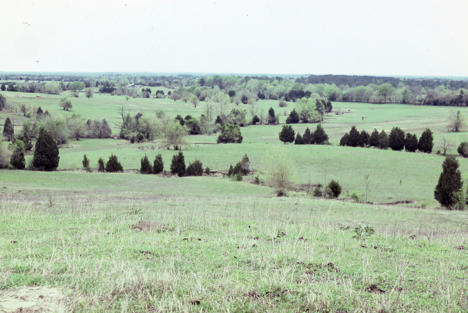
A livestock producer learns a lot about a pasture over time by managing it, but that is not the only way to obtain information about a given field. Often, a great deal can be gained from simple observation, because various plants are more likely to become established and thrive under certain conditions. Any of several factors can affect the populations of “indicator plants.”
Soil pH
Some plants provide a hint as to soil pH level. An indicator of soil acidity is a plant called red sorrel (also called sourgrass). This plant produces seedheads in April in most parts of the South, and when present in a field in large numbers it will provide a noticeable reddish cast. Conversely, some plants are indicators of a relatively high soil pH. One such plant is sweetclover, which is a legume although not really a clover. Actually, most true clovers are not favored by highly acid soil either, though most are not as sensitive as sweetclover.
Soil Moisture
A field or portion of a field that has a high population of rushes or sedges is almost always quite wet-natured. At the other end of the spectrum, yucca and prickly pear cactus volunteer in substantial numbers in areas where soil moisture is quite limited during most of the year.
Some forage species do best when there is a good deal of internal soil moisture available during most of the growing season. Examples are dallisgrass, red clover, white clover, johnsongrass, and tall fescue. At the other extreme, bahiagrass and bermudagrass are much more competitive in well-drained or even drought-prone areas.
Soil Fertility
Soil fertility also influences plant populations. For example, to maintain a good stand of an improved bvermudagrass over a long period of time, fairly regular fertilization (especially with potassium) is necessary. This is particularly true in hayfields where a large portion of the nutrients in plants are being removed instead of being recycled in dung and urine. Thus, a long-term thick stand of an bermudagrass implies that the field has been fertilized well.
Even some weeds require good levels of fertility, chickweed being a good example. This winter annual is rarely seen in high populations except in well-fertilized areas. Evidence of the truth of this is that chickweed is most commonly a problem in turf and alfalfa fields. Some other plants thrive under relatively low levels of fertility. Centipedegrass often invades pastures in some areas in the Deep South. This happens almost invariably in areas that have not been fertilized well, thus shifting the competitive advantage away from more productive species.
Grazing Pressure
Grazing pressure is of extreme importance. For example, while johnsongrass is often used as a hay crop, it doesn’t persist well in closely grazed pastures. In addition, the presence of some weeds provides evidence of heavy grazing pressure. For example, a field with a high population of pigweed has usually been stocked heavily in recent months. This is because the close grazing and hoof action associated with a high stocking rate suppress forage stands, thus favoring germination of pigweed seed in the soil and establishment of pigweed seedlings.
Conclusion
It is surprising how much can be learned about the history of a pasture just by observing what is growing within it. The botanical composition of a pasture is influenced by many factors, one of which is the human management that has been provided.
__________________
Foraging Ahead is a column presented by Ragan & Massey and written by Dr. Don Ball, Professor Emeritus at Auburn University. Dr. Ball is one of the authors of the popular book “Southern Forages,” which can be found via a computer search that uses the words, “Southern Forages, The Fertilizer Institute.”
